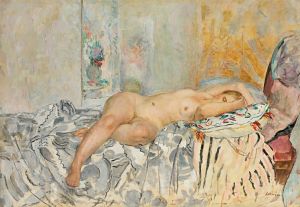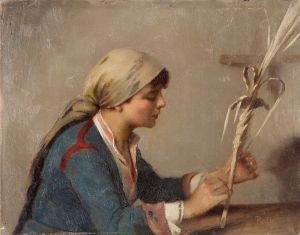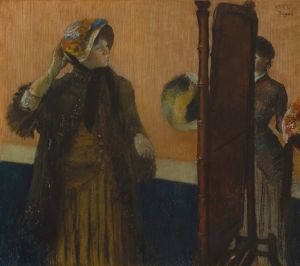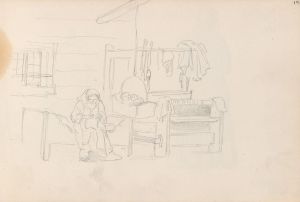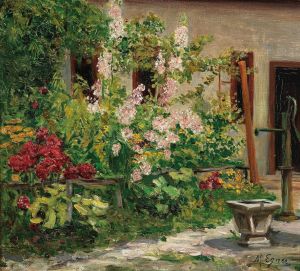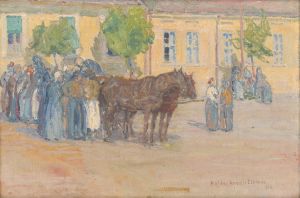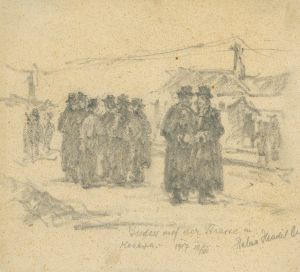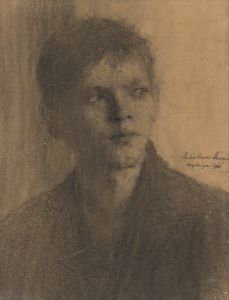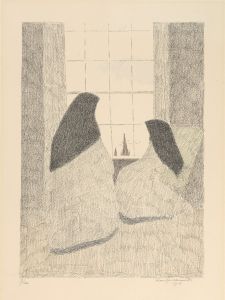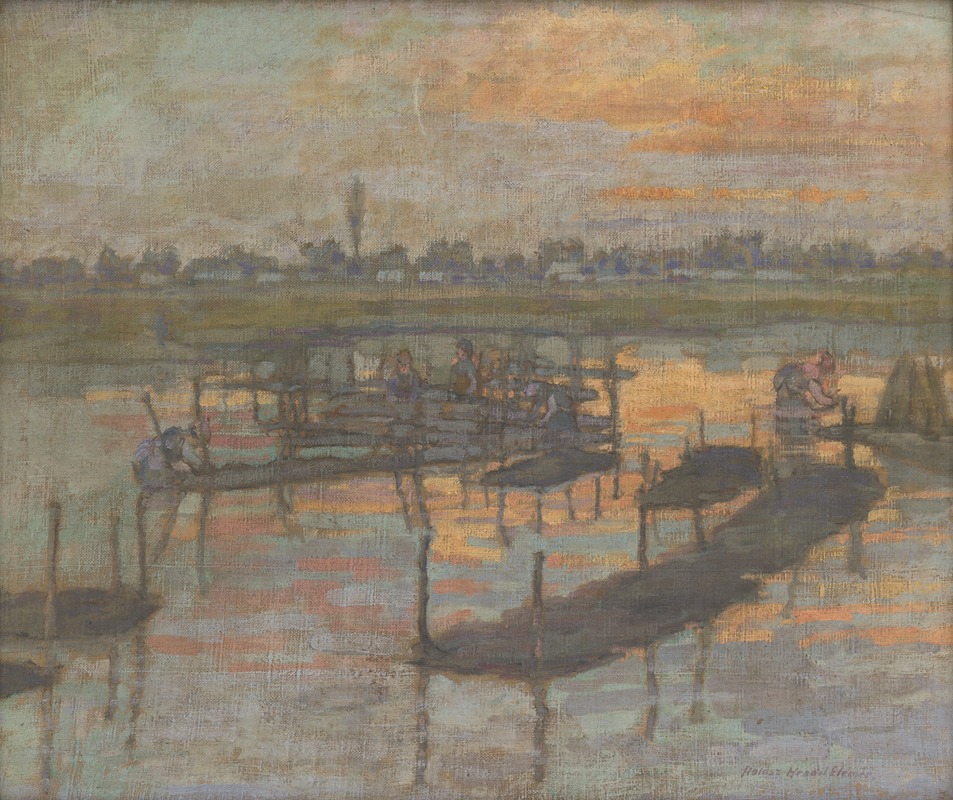
Máčanie konopí
A hand-painted replica of Elemír Halász-Hradil’s masterpiece Máčanie konopí, meticulously crafted by professional artists to capture the true essence of the original. Each piece is created with museum-quality canvas and rare mineral pigments, carefully painted by experienced artists with delicate brushstrokes and rich, layered colors to perfectly recreate the texture of the original artwork. Unlike machine-printed reproductions, this hand-painted version brings the painting to life, infused with the artist’s emotions and skill in every stroke. Whether for personal collection or home decoration, it instantly elevates the artistic atmosphere of any space.
Elemír Halász-Hradil was a Slovak painter known for his contributions to the art scene in the late 19th and early 20th centuries. One of his notable works is "Máčanie konopí," which translates to "Soaking Hemp" in English. This painting is an example of Halász-Hradil's interest in capturing rural life and traditional practices, themes that were prevalent in his body of work.
"Máčanie konopí" depicts the process of soaking hemp, a crucial step in the preparation of hemp fibers for textile production. This process was a common agricultural activity in Slovakia and other parts of Central Europe, where hemp was widely cultivated for its versatile uses. The painting reflects Halász-Hradil's attention to detail and his ability to portray the everyday lives of rural communities with authenticity and respect.
Halász-Hradil was born in 1873 in the town of Spišská Nová Ves, which was then part of the Austro-Hungarian Empire and is now located in Slovakia. He studied at the Academy of Fine Arts in Budapest and later continued his education in Munich, which was a significant center for art at the time. His education exposed him to various artistic styles and movements, which influenced his development as an artist.
Throughout his career, Halász-Hradil was known for his realistic style and his focus on genre scenes, landscapes, and portraits. His works often depicted the Slovak countryside and its inhabitants, capturing the essence of rural life with a sense of nostalgia and admiration. This focus on rural themes was part of a broader trend in European art during this period, where artists sought to document and preserve traditional ways of life in the face of rapid industrialization and social change.
"Máčanie konopí" is characteristic of Halász-Hradil's approach to painting, where he combines a keen observation of nature and human activity with a subtle use of color and composition. The painting likely features figures engaged in the labor-intensive process of soaking hemp, set against a backdrop of the Slovak landscape. Through his work, Halász-Hradil not only documented a specific cultural practice but also highlighted the connection between people and their environment.
Elemír Halász-Hradil's contributions to art were recognized during his lifetime, and he participated in several exhibitions across Europe. His works are part of various collections, and he remains an important figure in Slovak art history. "Máčanie konopí" serves as a testament to his skill as a painter and his dedication to portraying the cultural heritage of his homeland.
In summary, "Máčanie konopí" by Elemír Halász-Hradil is a significant work that captures a traditional Slovak practice with realism and sensitivity. The painting reflects the artist's broader interest in rural life and his ability to convey the beauty and complexity of everyday activities. Through this work, Halász-Hradil contributes to the preservation of cultural history and offers viewers a glimpse into the past.






